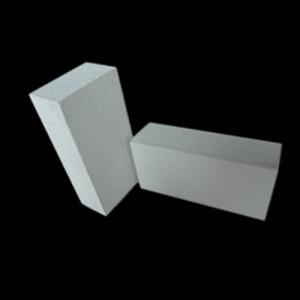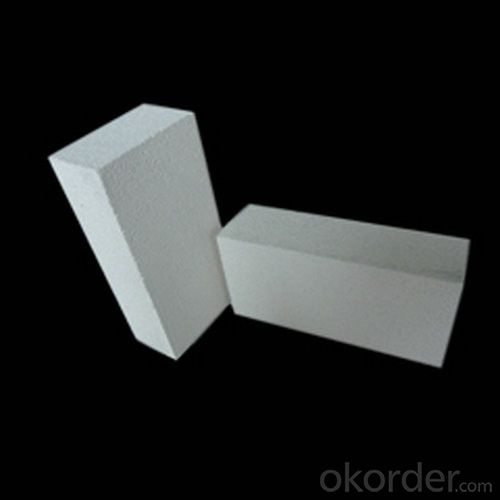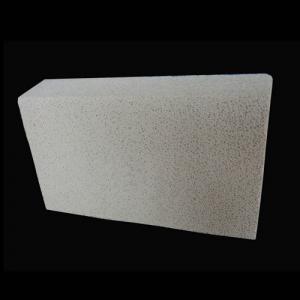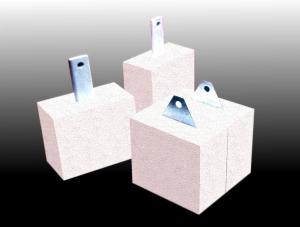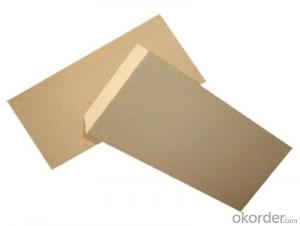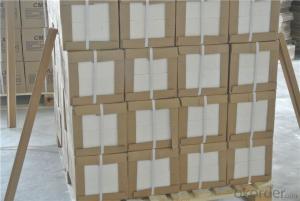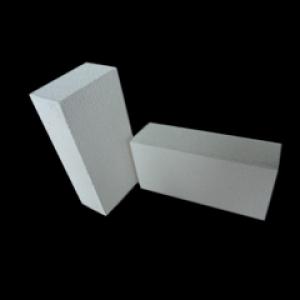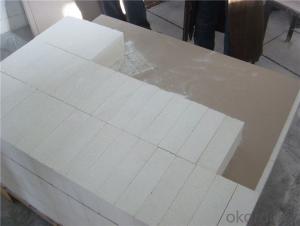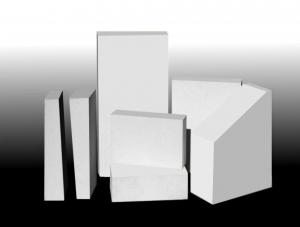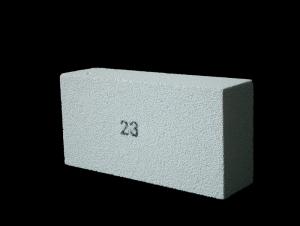Insulating Fire Brick - GJM Insulation Brick Insulating Brick
- Loading Port:
- Shanghai
- Payment Terms:
- TT or LC
- Min Order Qty:
- 1000 pc
- Supply Capability:
- 100000000 pc/month
OKorder Service Pledge
OKorder Financial Service
You Might Also Like
General information of Insulating Brick
Insulating firebricks are classified under tempera-ture between 1100C to 1700C, manufactured from high purity alumina clay.
Insulating fire bricks are made from high purity alumina and low iron content raw materials. The insulating fire bricks are produced by mixing, casting or extruding, drying, sintering and grinding. Our insulating fire bricks GJM23 temperature is 1260℃(2300℉). A variety of type could be done according to customer’s request.
To make our firebricks more energy and cost effective, we have different manufacturing methods for our insulating fire bricks casting and extruding method.
For insulating fire bricks GJM23,we choose the casting methord.The casting insulating fire bricks offering the lowest density, the lowest thermal conductivity for the application above 1000℃.
Application of Insulation brick
Insulating firebricks can be used as a hot face lining directly exposed to the heat or as a backup insulation layerin iron and steel mills, non-ferrous foundries, petrochemical, ceramic, glass.
Features of Insulation brick
◆Light weight and low thermal conductivity
◆Low heat storage
◆Low iron and impurities
◆High thermal shock resistance
Technical Data of GJM series Insulation brick
| JM23 | JM26 | JM28 | JM30 | JM32 | ||||
| Physical Properties: | ||||||||
| Classifiction Temperature | ℃ | 1260.0 | 1430.0 | 1500.0 | 1600.0 | 1650 | ||
| Density | Kg/m3 | 550.0 | 850.0 | 900.0 | 1000.0 | 1100 | ||
| Cold Crushing Strength | Mpa | 1.2 | 2.0 | 2.5 | 2.8 | 3.5 | ||
| Reheating Linear Change(24hrs) | ||||||||
| 1230℃ | % | 0.4 | ||||||
| 1300℃ | ||||||||
| 1400℃ | % | 0.5 | ||||||
| 1510℃ | % | 0.6 | ||||||
| 1600℃ | % | 0.7 | ||||||
| 1650℃ | % | 0.8 | ||||||
| Hot Load Strength Deform(90 minutes) | ||||||||
| 1100℃ at 0.034 Mpa(5psi) | % | 0.1 | ||||||
| 1260℃ at 0.069 Mpa(10psi) | % | 0.2 | ||||||
| 1320℃ at 0.069 Mpa(10psi) | % | 0.3 | ||||||
| 1370℃ at 0.069 Mpa(10psi) | % | 0.2 | 0.1 | |||||
| Thermal Conductivity | ||||||||
| 400℃ | W/m.k | 0.2 | 0.3 | 0.3 | 0.3 | 0.32 | ||
| 600℃ | W/m.k | 0.2 | 0.3 | 0.3 | 0.3 | 0.35 | ||
| 800℃ | W/m.k | 0.2 | 0.3 | 0.4 | 0.4 | 0.38 | ||
| 1000℃ | W/m.k | 0.2 | 0.3 | 0.4 | 0.4 | 0.42 | ||
| 1200℃ | W/m.k | 0.4 | 0.4 | 0.4 | 0.44 | |||
| 1400℃ | W/m.k | |||||||
| Specific Heat | KJ/Kg.K | 1.1 | 1.1 | 1.1 | 1.1 | 1.10 | ||
| Chemical Analysis: | ||||||||
| Al2O3 | % | 47.0 | 50.0 | 60.0 | 70.0 | 75.0 | ||
| SiO2 | % | 44.4 | 47.1 | 38.2 | 28.3 | 23.2 | ||
| Fe2O3 | % | 0.9 | 0.7 | 0.6 | 0.5 | 0.5 | ||
| TiO2 | % | 1.2 | 0.1 | 0.1 | 0.1 | 0.1 | ||
| CaO | % | 5.2 | 0.1 | 0.1 | 0.1 | 0.1 | ||
| MgO | % | 0.3 | 0.2 | 0.1 | 0.1 | 0.1 | ||
| Na2O+K2O | % | 1.1 | 1.7 | 0.8 | 0.7 | 0.6 | ||
Technical Data of B series Insulation Brick
| B-1 | B-2 | B-3 | B-4 | B-5 | B-6 | B-7 | ||||
| Physical Properties: | ||||||||||
| Density | g/cm3 | 0.7 | 0.7 | 0.75 | 0.80 | 0.80 | 0.90 | 1.00 | ||
| Cold Crushing Strength | Mpa | 2.5 | 2.5 | 2.5 | 2.5 | 2.5 | 3.0 | 3.0 | ||
| Thermal Conductivity 350℃ | W/m.k | 0.17 | 0.18 | 0.20 | 0.22 | 0.23 | 0.27 | 0.31 | ||
Technical Data of C series Insulation Brick
| C-1 | C-2 | C-3 | ||||
| Physical Properties: | ||||||
| Density | g/cm3 | 1.1 | 1.2 | 1.3 | ||
| Cold Crushing Strength | Mpa | 5.0 | 7.0 | 10.0 | ||
| Thermal Conductivity 350℃ | W/m.k | 0.30 | 0.38 | 0.45 | ||
Photo of Insulation Brick
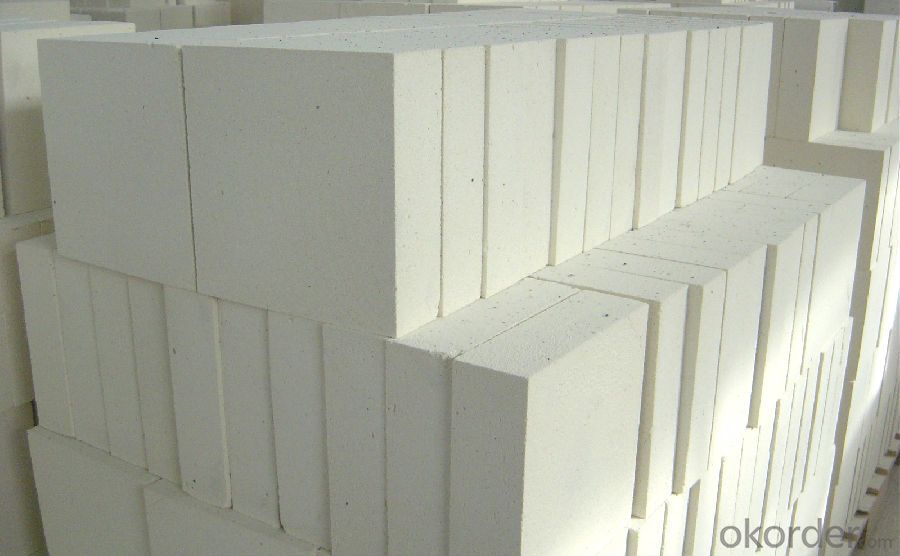
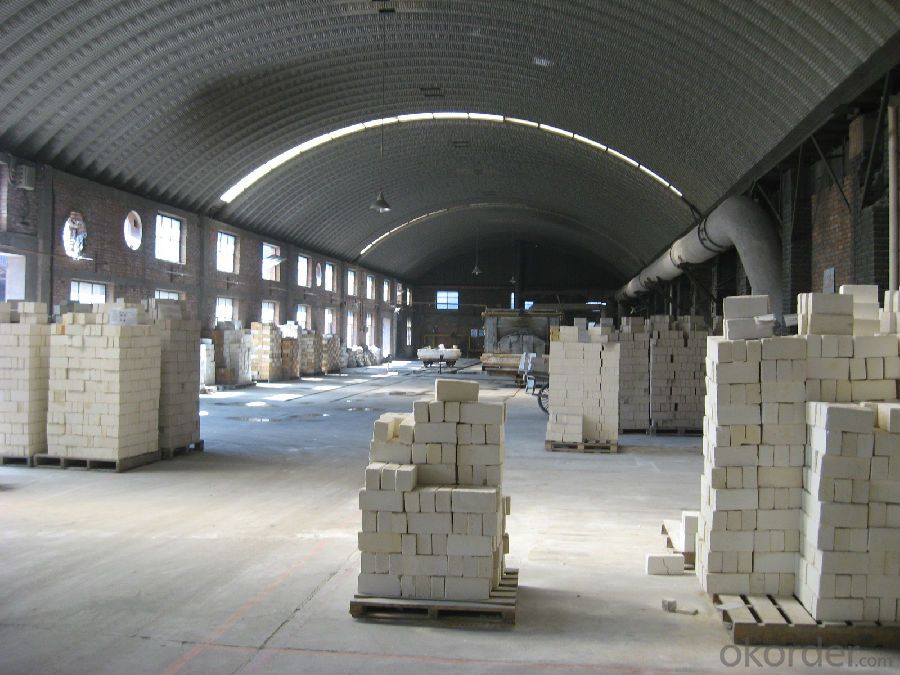
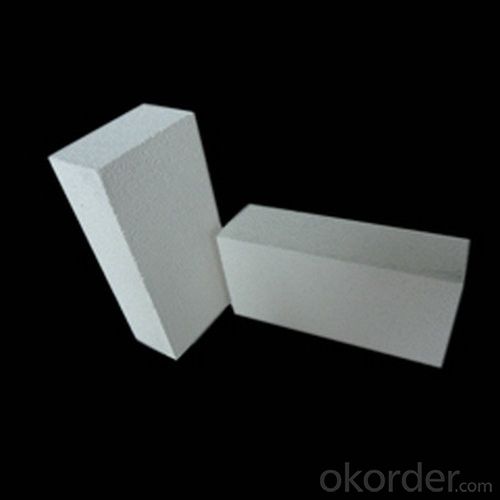
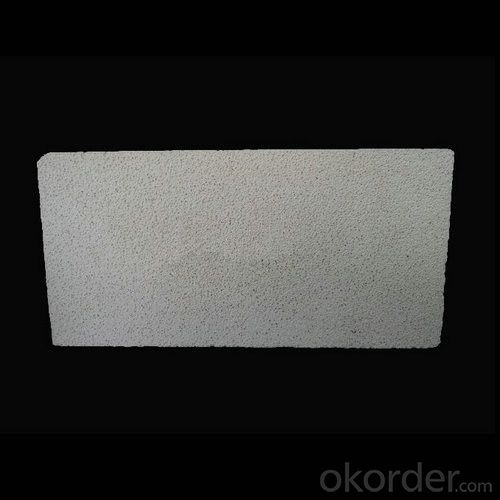
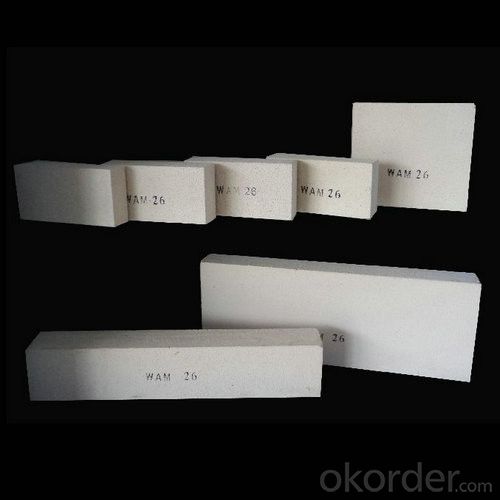
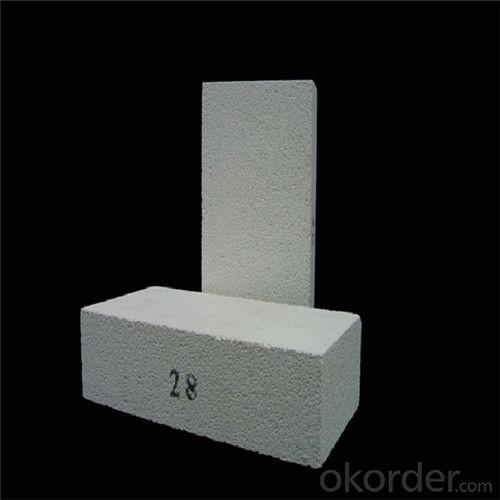
- Q: Can insulating fire bricks be used as a lining for kiln cars?
- Yes, insulating fire bricks can be used as a lining for kiln cars. These bricks are designed to withstand high temperatures and have excellent insulating properties, making them ideal for use in kilns where heat retention is required. Additionally, their lightweight nature makes them suitable for use on kiln cars, which need to be moved frequently.
- Q: Can insulating fire bricks be used in the construction of industrial boilers?
- Yes, insulating fire bricks can be used in the construction of industrial boilers. These bricks are designed to withstand high temperatures and provide excellent insulation, making them ideal for use in boiler systems where heat retention and efficiency are crucial. They help to prevent heat loss and ensure efficient energy transfer, making them a popular choice for industrial boiler applications.
- Q: Can insulating fire bricks be used in crucibles?
- Crucibles do not allow the use of insulating fire bricks. Insulating fire bricks are primarily meant for insulation purposes in kilns, furnaces, and fireplaces, where low thermal conductivity is desirable. On the other hand, crucibles necessitate materials with high thermal conductivity and resistance to endure the intense heat and chemical reactions involved in processes like metal melting or refining, conducting high-temperature experiments, or performing chemical reactions. Consequently, crucibles are generally constructed using materials like graphite, clay, or ceramic, which can withstand the extreme conditions and facilitate efficient heat transfer.
- Q: Can insulating fire bricks be used in ladles?
- Yes, insulating fire bricks can be used in ladles.
- Q: Do insulating fire bricks expand and contract with temperature changes?
- Yes, insulating fire bricks do expand and contract with temperature changes. Like any material, when exposed to heat, the insulating fire bricks expand, and when cooled, they contract. This expansion and contraction occur due to the thermal expansion coefficient of the material, which determines how much it will expand or contract for a given change in temperature. It is important to consider this property when using insulating fire bricks in applications where temperature fluctuations are expected, as failure to account for the expansion and contraction may lead to structural damage or cracking.
- Q: Can insulating fire bricks be used for insulation in autoclaves?
- Insulating fire bricks have the capability to be utilized for insulation within autoclaves. These bricks are specifically engineered to possess a minimal thermal conductivity, enabling them to proficiently retain heat and endure elevated temperatures. The insulation of autoclaves necessitates the ability to sustain a steady temperature and pressure, and insulating fire bricks excel in delivering exceptional insulation properties amidst these challenging circumstances. Furthermore, their robustness and durability render them well-suited for enduring the rigorous heat and pressure fluctuations commonly encountered in autoclaves. All in all, insulating fire bricks emerge as a dependable and efficient option for insulating autoclaves.
- Q: Can insulating fire bricks be used in solar power plants?
- Yes, insulating fire bricks can be used in solar power plants. They are commonly used in the construction of high-temperature equipment such as solar receivers, combustion chambers, and thermal energy storage systems. Insulating fire bricks help to minimize heat loss and maintain high operating temperatures, making them suitable for various applications in solar power plants.
- Q: Are insulating fire bricks suitable for insulation in power boilers?
- Yes, insulating fire bricks are suitable for insulation in power boilers. They have excellent thermal conductivity and can withstand high temperatures, making them effective in reducing heat loss and improving energy efficiency in power boilers. Additionally, their insulating properties help to maintain a consistent temperature within the boiler, enhancing its overall performance and reliability.
- Q: Can insulating fire bricks be used in the construction of autoclaves?
- Insulating fire bricks are indeed applicable for the construction of autoclaves. Autoclaves necessitate materials capable of enduring high temperatures and pressures, and insulating fire bricks are specifically engineered to exhibit exceptional thermal resistance and insulation characteristics. These bricks consist of refractory materials such as alumina, silica, and other additives that enable them to withstand extreme temperatures and thermal shocks. Furthermore, they possess a lightweight composition and low thermal conductivity, thereby reducing heat loss and enhancing energy efficiency within autoclaves. Moreover, insulating fire bricks are endowed with a commendable load-bearing capacity, rendering them suitable for the structural elements of autoclaves. In summary, the utilization of insulating fire bricks during the construction of autoclaves serves to guarantee the safety and effectiveness of the equipment.
- Q: Can insulating fire bricks be used in chemical processing plants?
- Yes, insulating fire bricks can be used in chemical processing plants. These bricks are designed to withstand high temperatures and provide excellent insulation, making them suitable for various industrial applications, including chemical processing. They can be used to line furnaces, kilns, reactors, and other equipment where temperature control and insulation are essential for efficient and safe operations in the chemical industry.
Send your message to us
Insulating Fire Brick - GJM Insulation Brick Insulating Brick
- Loading Port:
- Shanghai
- Payment Terms:
- TT or LC
- Min Order Qty:
- 1000 pc
- Supply Capability:
- 100000000 pc/month
OKorder Service Pledge
OKorder Financial Service
Similar products
Hot products
Hot Searches
Related keywords
